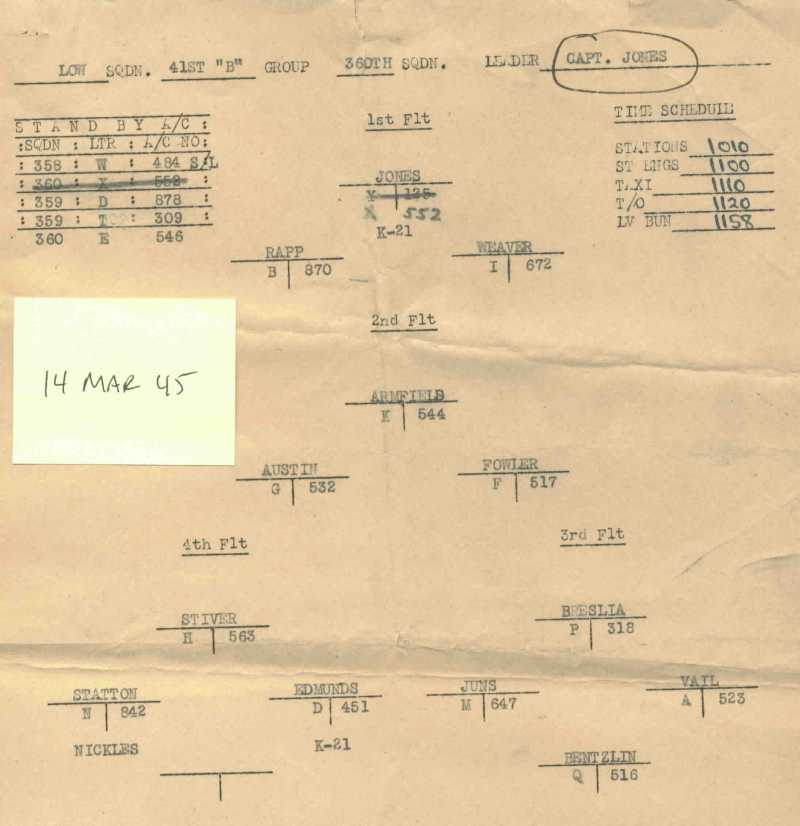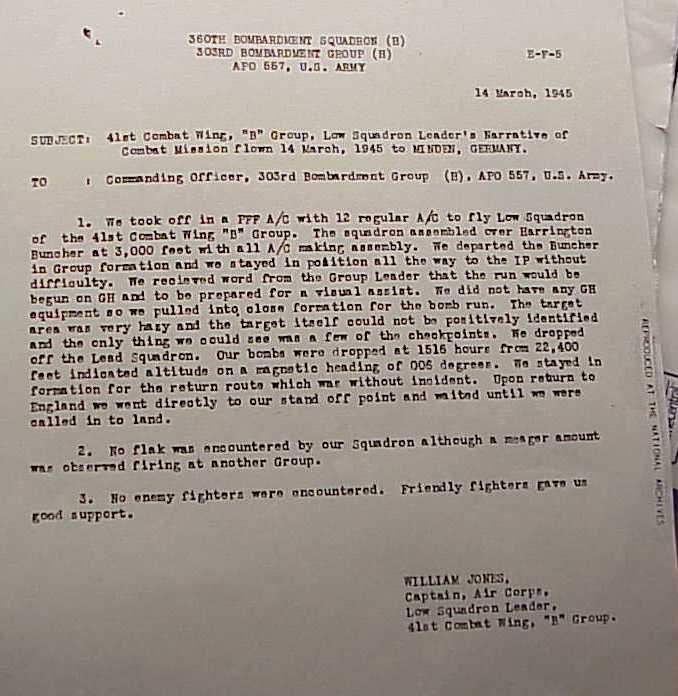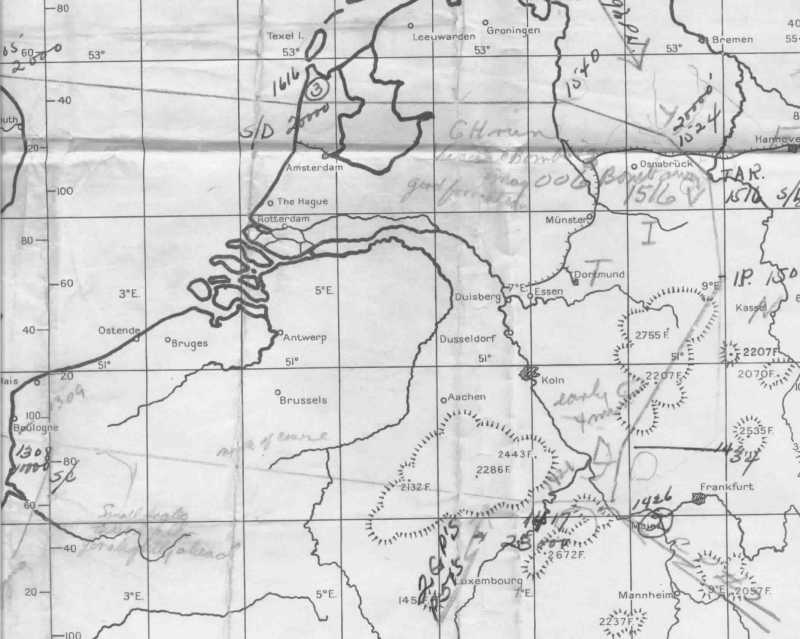
360th Bomb Squadron narrative.

A formation briefing sheet was found for this mission, which shows the planes/pilots in the LOW squadron that the 360thBS flew on this mission. Two things of note. On this, and on other formation briefing sheets, there are notations for "NICKLES" and "K-21" or "K-22". The Nickles are planes that drop leaflets instead of bombs. K-21 and K-22 are designations for cameras of different focal length used for taking pictures of bomb damage and other things during the mission. Also of interest on this mission, is that Captain Jones was originally scheduled to fly "Y-125", which was AC# 44-8125, "Sparky", or PU-Y, however he instead flew "X-552", which was AC# 44-8552, ie PU-X, which was originally listed as being a spare for this mission. Both of these aircraft were "PFF" ships, equipped with ground sensing radar electronics for leading a squadron.

Mission report submitted by Captain Jones, provided by Jim Walling,
a ball turret gunner in the lead 358th BS.

The 303rd BG narrative for this mission stated that 39 aircraft (ie 3 squadrons of 13) flew as the "B" group in the 41st CBW, which was lead by Major Louis Schulstad. This narrative indicated that although the target area was clear of clouds, that there was a lot of haze near the ground, which made it difficult to locate the target. It also stated that there was a smoke screen hiding the target.
A section of the Pilot's of Aircraft mission map is shown below. Note
the "target" and "IP" noted to the right.
The IP is the turning point that generally started the bomb run, when
the ship would normally be turned over to the bombadier or mickey navigator.

There were several notes on the map. On the back is a note
that states "Weaver's Top turret gunner out of turret from just beyond
Target all the way out. Ball turret left turret at E ????"
Captain Jones, being the squadron commander on this mission, was responsible
for making sure everyone, even those in other planes were at their positions,
and it was considered essential that all gunners remain at their
guns until back to friendly territory, in case enemy fighters are encountered.
Some crews tended to be a bit undiciplined in this respect near the end
of the war, when there were few enemy fighters flying. 1 Lt Jack
Weaver was the pilot of the deputy lead plane for the squadron on this
mission, flying just to the right of Captain Jones's plane..
On the front of the map were several notes. One
stated "interphone out after TO {take-off}. Fixed while circling
buncher." I assume this means that the intercom on which the crew
communicates was broken, but was fixed while circling the buncher, which
was an assembly point that the planes circled while getting into formation
with the squadron and the rest of the group after take-off. There
was a note at the point where they left the UK indicating "4 element little
back", which I assume to mean that the 4th flight of the squadron was dropping
back out of formation. The 4th flight was the back grouping of 3
planes flown by Stiver, Statton and Edmunds on this mission. After
crossing over the mainland, there is a note stating " ??? began lagging",
and "small dogleg to let lead get slightly ahead" . Apparently the
lead squadron of the group started slowing down, so the low squadron zig-zagged
slightly to allow it to get back in position. A little further along, was
a note that they were slightly north of course, and another note that 2
groups of P51s were encountered. There was also a note that
"bandits at 2-8 , 15:57", indicating the enemy fighters were observed at
15:57, which was about 45 minutes after bombs away {and during the time
period when the gunners were out of their positions on the other plane}.
Not sure what the 2-8 referred to.
Overall, this was a pretty un-eventful mission.